 by "ttyymmnn" (ttyymmnn)
by "ttyymmnn" (ttyymmnn)
Published 06/30/2017 at 12:35
 by "ttyymmnn" (ttyymmnn)
by "ttyymmnn" (ttyymmnn)
Published 06/30/2017 at 12:35
Tags: Planelopnik
; planelopnik history
STARS: 11
Welcome to This Date in Aviation History , getting you caught up on milestones, important historical events and people in aviation from June 28 through June 30.
!!! UNKNOWN CONTENT TYPE !!!
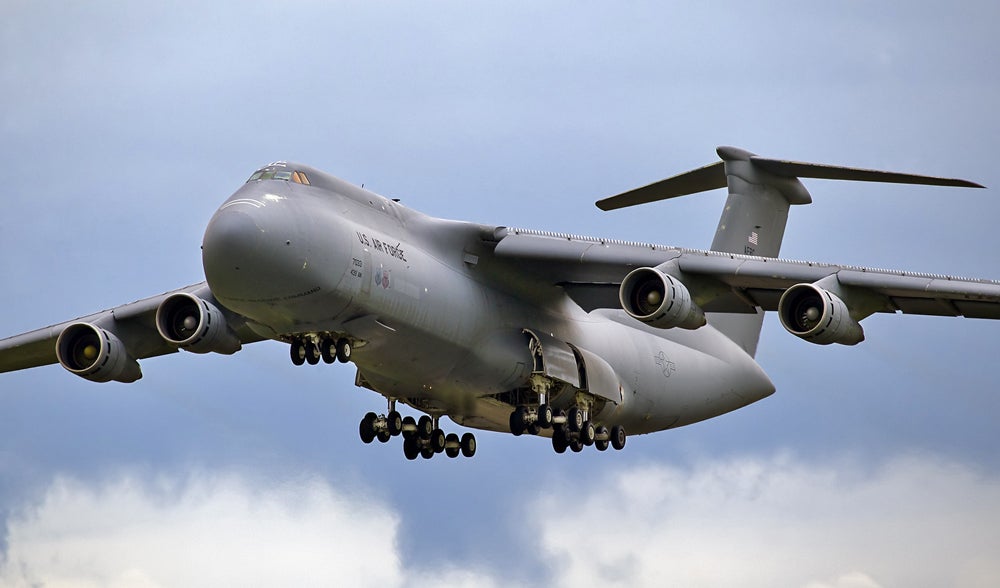
June 30, 1968 – The first flight of the Lockheed C-5 Galaxy. There is debate as to whether it was Napoleon Bonaparte or Frederick the Great who made that famous observation on the logistics of warfare that “An army travels on its stomach,” though it is a truism that lasted from the earliest days of war into our modern jet age. But an army doesn’t need just beans and bullets, it also needs to get soldiers to the battle. Fought in two theaters on opposite sides of the planet, WWII demonstrated the need for truly global transport, and following the war, the US Air Force joined the age of strategic jet transport when the Lockheed C-141 Starlifter entered service in 1965. But no sooner had that remarkable aircraft made its first flight than the Air Force began looking for something even bigger, and ended up with what was at the time one of the largest aircraft in the world. Work on the strategic heavy-lifter began in 1961, when aircraft manufacturers took part in a program to develop an aircraft that would serve as both a replacement for the Douglas C-133 Cargomaster turboprop cargo aircraft and as a complement to the smaller C-141. The Air Force needed something that could carry larger vehicles and equipment, have a maximum takeoff weight (MOT) of 600,000 pounds and could still operate from the same runways used by the Starlifter. That requirement was then amended to an aircraft that could deliver a payload of 125,000 pounds at a distance of 8,000 miles, essentially doubling the payload for half the distance of the original requirement. Boeing, Douglas and Lockheed all submitted proposals in 1964, and General Electric began work to develop an engine that was capable of moving a plane with a 700,000 pound MOT. Though Boeing’s design was deemed better than Lockheed’s, Lockheed won the contract, in large part because they were the lower bidder. The Air Force awarded a production contract to Lockheed in 1965, and the GE TF39 high-bypass turbofan was chosen at the same time.
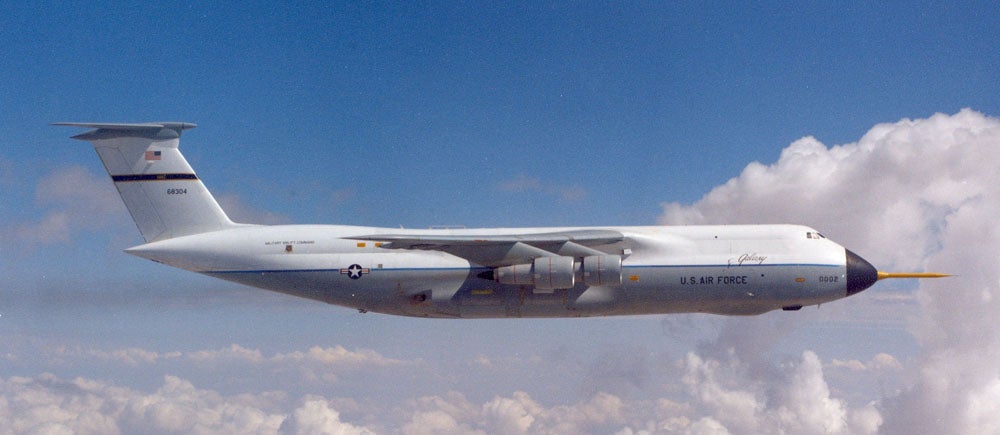
Following its maiden flight, the first production aircraft were delivered in December 1969, and 81 C-5As were delivered by the end of 1973. The new heavy lifter immediately showed its mettle by carrying personnel and materiel to Europe and Southeast Asia, and its range was expanded with the addition of in-flight refueling capabilities. It’s low cargo deck, with doors in both front and back, allowed drive-through loading, and its wide girth meant that the Military Airlift Command could now transport any vehicle in the US inventory and twice as much payload as the C-141. The C-5 can accommodate two M1 Abrams main battle tanks plus two Bradley Fighting Vehicles , or up to six Boeing AH-64 Apache attack helicopters. The main deck can transport up to 270 troops. The Galaxy proved to be a cargo workhorse, but all that heavy lifting meant that the wings needed replacing by the 1980s to extend their service life, and the C-5 AMP and C-5M Super Galaxy projects are working to modernize the remaining fleet and keep them flying until at least 2040. (Photo by Oleg V. Belyakov via Wikimedia Commons ; US Air Force photo )
!!! UNKNOWN CONTENT TYPE !!!
!!! UNKNOWN CONTENT TYPE !!!
!!! UNKNOWN CONTENT TYPE !!!
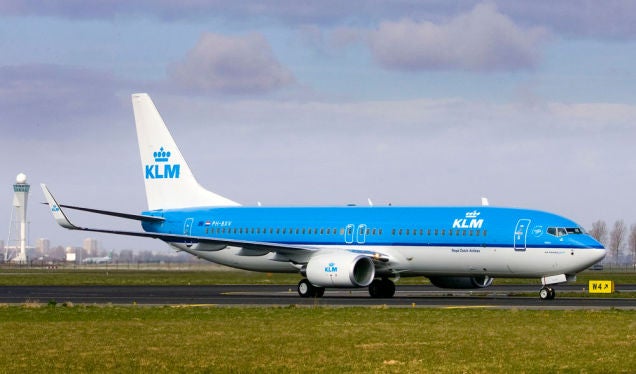
June 29, 2011 – KLM becomes the world’s first airline to operate a flight using biofuel. Aviation currently represents 2% of global greenhouse gas emissions, a number that is expected to rise significantly in the coming years, having already accounted for an 87% rise in greenhouse gas emissions in Europe alone between 1990-2006. One method sought to reduce these emissions is through the use of aviation biofuel and, following successful aviation industry tests beginning 2007, KLM became the first to fly revenue passengers from Amsterdam to Paris in a Boeing 737-800 powered by used cooking oil. Work is continuing in the field in the hopes of producing a sustainable source of fuel that does not compete with the production of food or consume too much agricultural land. (Photo via KLM)
!!! UNKNOWN CONTENT TYPE !!!
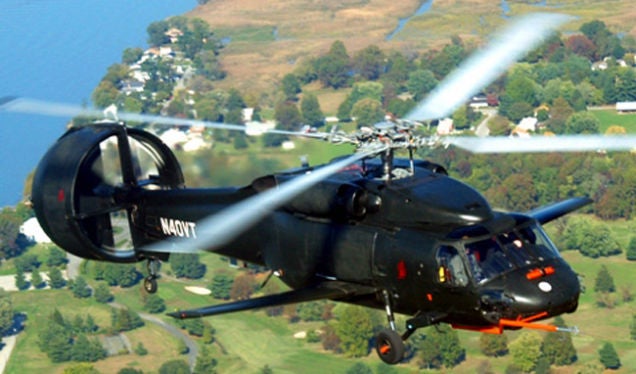
June 29, 2007 – The first flight of the Piasecki X-49, an experimental compound helicopter designed to increase the range and speed over traditional helicopters. Because of the limitations of their design, traditional helicopters are limited to about 260 mph, and the US Army’s Sikorsky UH-60 Black Hawk , its standard utility helicopter, has a top speed of only 183 mph. The X-49 is a Sikorsky YSH-60F Seahawk that has been fitted with a vectored thrust ducted propeller (VTDP) and short swept wings in the hopes that the helicopter can reach speeds of up to 230 mph or more. The X-49 has made more than 80 test flights, and the concept remains under development. (Photo via Piasecki Aircraft )
!!! UNKNOWN CONTENT TYPE !!!
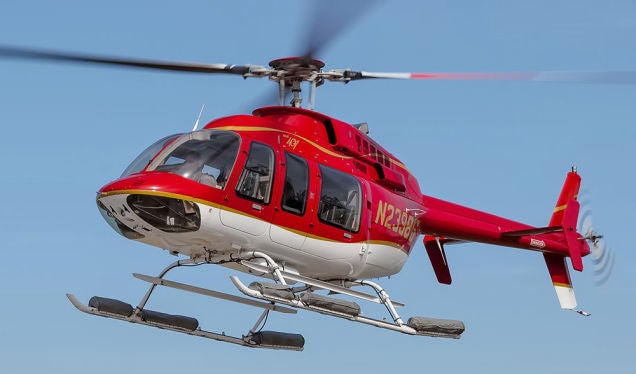
June 29, 1995 – The first flight of the Bell 407,
a civil utility helicopter that was derived from the extremely successful
Bell 206 LongRanger
. Where the earlier 206 employed a two-bladed rotor, the 407 makes use of a four-bladed rotor and hub that was developed as part of the US Army’s
OH-58D Kiowa Warrior
program. The composite construction of the rotor blades and hub have no life limits, and a more powerful
Rolls-Royce/Allison 250/C47
engine increases the maximum takeoff weight and improves performance in hotter temperatures and at higher altitudes. Over 1,000 have been built, and the 407 remains in production, proving popular with civil authorities, offshore transport and as an air ambulance.
(Photo by stuart.mike via
Wikimedia Commons
)
!!! UNKNOWN CONTENT TYPE !!!
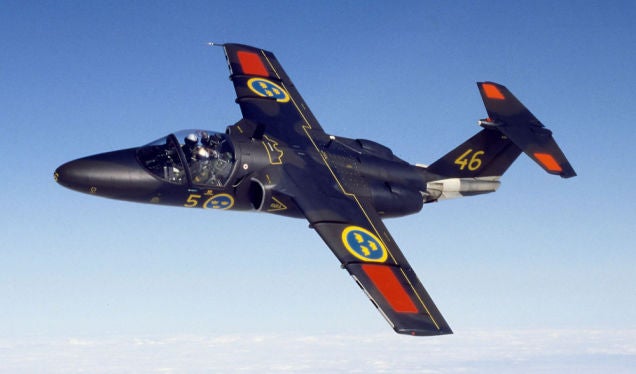
June 29, 1963 – The first flight of the Saab 105,
a two-seat training aircraft that began as a private venture by Saab in the hopes that the Swedish Air Force would select it to replace the
de Havilland Vampire
. Adopted by the Swedish Air Force in 1967 as the Sk 60, the 105 features side-by-side seating for better communication between the pilots, and though originally designed as a trainer, the 105 can be outfitted with with either ground attack or air-to-air munitions depending on the mission. In addition to the crew of 2, a small bench behind the pilots can accommodate two passengers. Following an engine upgrade, the 105 remains in service with Sweden and Austria, though Sweden is currently investigating a replacement for their older aircraft. Just under 200 were built between 1963-1972.
(Photo by Matt Morgan via
Wikimedia Commons
)
!!! UNKNOWN CONTENT TYPE !!!
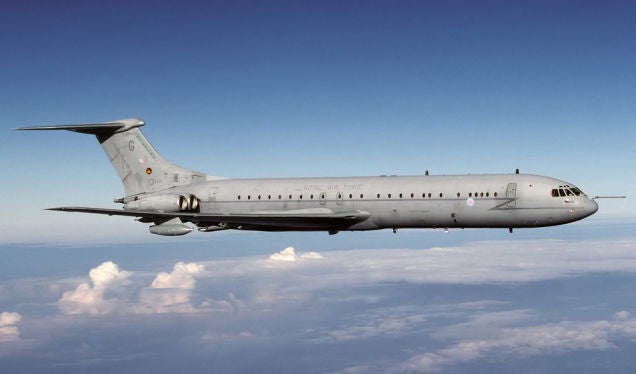
June 29, 1962 – The first flight of the Vickers VC10,
a long-range airliner that was developed to operate on long-distance routes while still having the capability to operate from shorter runways and in hotter temperatures than contemporary airliners. The VC10 was powered by 4
Rolls-Royce Conway
turbofan engines mounted on the tail and, with a top speed of 580 mph, the VC10 holds the record for the fastest atlantic crossing by a subsonic airliner. The VC10 was introduced with
British Overseas Airways Corporation
(BOAC) in 1964, and proved enormously popular for its load capabilities, speed, and relative quiet compared to other airliners. The VC10 also served the RAF as a transport, VIP and aerial tanker. A total of 54 were built, and it was retired from RAF service in 2013.
(Photo by Chris Lofting via
Wikimedia Commons
)
!!! UNKNOWN CONTENT TYPE !!!

June 29, 1900 – The birth of Antoine de Saint-Exupéry,
a French author and pilot who is best known for his book
Le Petit Prince
(
The Little Princ
e). Before WWII, Saint-Exupéry was a successful commercial pilot, and flew for the French Air Force in the early part of the war. Following the fall of France, Saint-Exupéry traveled to America to encourage the US to join the war, then joined the
Free French Air Forces
in North Africa, even though his health was failing and he was beyond the age limit for service. Saint-Exupéry disappeared over the Mediterranean Sea on July 31, 1944 while flying a Lockheed F-5B, the unarmed reconnaissance variant of the
Lockheed P-38 Lightning
, and while remains of a pilot were found, they were not confirmed to be his.
(Exupéry photo author unknown)
!!! UNKNOWN CONTENT TYPE !!!

June 30, 1977 – President Jimmy Carter cancels the Rockwell B-1 Lancer.
Following the cancellation of the
North American XB-70 Valkyrie
program to develop a supersonic successor to the
Boeing B-52 Stratofortress
, the process was restarted under the
Nixon Administration
and work on the new bomber recommenced. But with the arrival of the
MiG-25
, and its
MiG-31
successor with look-down shoot-down radar, the viability of the new bomber was put into question, and the program was canceled by the
Carter Administration
in the face of spiraling budgets and development of
cruise missiles
. The program was subsequently restored by the
Reagan Administration
in 1981, with the development of the more advanced B-1B which first flew in 1974 and remains in service today.
(US Air Force photo)
!!! UNKNOWN CONTENT TYPE !!!
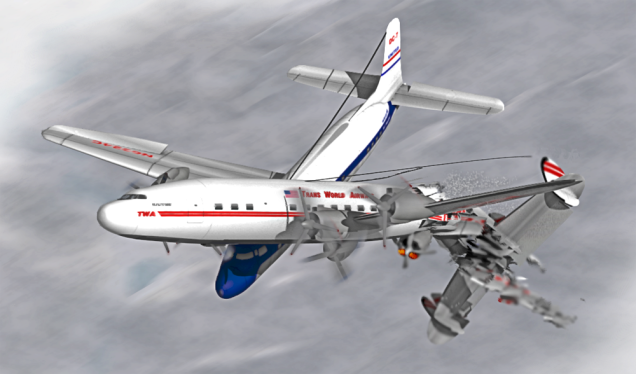
June 30, 1956 – Two airliners collide in midair over the Grand Canyon.
At approximately 10:30 am, TWA Flight 2, a
Lockheed L-1049 Super Constellation
en route from Los Angeles to Kansas City collided in midair with United Airlines Flight 718, a
Douglas DC-7 Mainliner
flying from Los Angeles to Chicago, resulting in the deaths of all 128 passengers and crew on both flights. Evidence indicates that at least one of the airliners spotted the other and initiated unsuccessful evasive maneuvers before the aircraft collided, and investigators indicated that the pilots likely did not see each other in time due to clouds, poor cockpit visibility, and high cockpit workload. The crash was the deadliest to date on US soil, and led to the creation of the Federal Aviation Agency (later the
Federal Aviation Administration
) in 1958 to give the office total authority over American airspace and spurred the modernization of air traffic control.
(Illustration via
Wikimedia Commons
)
!!! UNKNOWN CONTENT TYPE !!!
!!! UNKNOWN CONTENT TYPE !!!
!!! UNKNOWN CONTENT TYPE !!!
!!! UNKNOWN CONTENT TYPE !!!
!!! UNKNOWN CONTENT TYPE !!!
!!! UNKNOWN CONTENT TYPE !!!
!!! UNKNOWN CONTENT TYPE !!!
If you enjoy these Aviation History posts, please let me know in the comments. And if you missed any of the past articles, you can find them all at Planelopnik History . You can also find more stories about aviation and aviators at Wingspan and Planes You’ve (Probably) Never Heard Of .
!!! UNKNOWN CONTENT TYPE !!!
 "$kaycog" (skaycog)
"$kaycog" (skaycog)
06/30/2017 at 12:46, STARS: 3

The C-5 Galaxy has quite an appetite.
 "WilliamsSW" (williamssw)
"WilliamsSW" (williamssw)
06/30/2017 at 13:00, STARS: 0
I know that Saint-Exupery is best known for The Little Prince, but Wind, Sand and Stars is a must read, as is Night Flight, for that matter.
The Grand Canyon collision is well worthy of its own article (which you’ve probably already done somewhere) - it’s perhaps the accident that has had the biggest influence on what our current air transportation system looks like.
 "Lumpy44, Proprietor Of Fine Gif" (lumpy44)
"Lumpy44, Proprietor Of Fine Gif" (lumpy44)
06/30/2017 at 13:02, STARS: 2
Reminds me of a girl I went to high school with.
 "ttyymmnn" (ttyymmnn)
"ttyymmnn" (ttyymmnn)
06/30/2017 at 13:05, STARS: 1
Netflix is currently showing a 2015 animated version of The Little Prince which is absolutely gorgeous and well worth your time to watch. My wife and I were looking for something to watch one night, and since I have (sadly) never read the book, we watched it. I was blown away. It’s a stunning film, and exceptionally well made. I need to up my Saint-Exupery game.
I have not done a full article about the Grand Canyon collision, but that is a good idea.
 "merged-5876237249235911857-hrw8uc" (merged-5876237249235911857-hrw8uc)
"merged-5876237249235911857-hrw8uc" (merged-5876237249235911857-hrw8uc)
06/30/2017 at 13:05, STARS: 0
I thought they were phasing out the C-5s in favor of the C-17s?
 "ttyymmnn" (ttyymmnn)
"ttyymmnn" (ttyymmnn)
06/30/2017 at 13:07, STARS: 1
I think they were going to, but Congress stepped in and told the AF to keep them back in 2003. Now their service life is being extended.
 "WilliamsSW" (williamssw)
"WilliamsSW" (williamssw)
06/30/2017 at 13:15, STARS: 1
I’ll have to look on Netflix for that - - I actually have a copy of The Little Prince, but haven’t read it yet. Saint-Exupery’s style is very beautiful and mesmerizing to me - particularly since he’s writing about something I love anyways.
The Grand Canyon midair is fascinating, given how different the airspace system was then, and how the ‘Big Sky’ theory to accident avoidance was in use at the time.
 "HammerheadFistpunch" (hammerheadfistpunch)
"HammerheadFistpunch" (hammerheadfistpunch)
06/30/2017 at 13:16, STARS: 1
our airmed crews used to fly 407's, now they have AW109s. The 407s were well liked by the crews.
 "merged-5876237249235911857-hrw8uc" (merged-5876237249235911857-hrw8uc)
"merged-5876237249235911857-hrw8uc" (merged-5876237249235911857-hrw8uc)
06/30/2017 at 13:18, STARS: 0
Gotcha. I was working as a contractor on WPAFB and one of our JV partners had completed a new C-5 hanger there, then a couple years later, the word came that the C-5s were going away, then by the time I left the base, 3-4 years ago, they had all been replaced with C-17s.... not nearly as impressive. Those C-5 are yuge. And definitely a distinct sound when they are flying laps over the Dayton skies. Those C-17s are silent by comparison.
 "ttyymmnn" (ttyymmnn)
"ttyymmnn" (ttyymmnn)
06/30/2017 at 13:24, STARS: 1
I’ve seen many C-5s flying around San Antonio. Definitely a distinctive whine from those turbines.
 "Chariotoflove" (chariotoflove)
"Chariotoflove" (chariotoflove)
06/30/2017 at 13:40, STARS: 2

 "X37.9XXS" (x379xxs)
"X37.9XXS" (x379xxs)
06/30/2017 at 13:40, STARS: 4
Long ago, I was hitching a ride on a KC135 bound for RAF Fairford. The boomer (the guy who handles the refueling) asked me if I wanted to come back and watch
I was being careful to stay out of the way; when he pointed out this little speck at about 1 o’clock. Then it got bigger
AND BIGGER
!!! UNKNOWN CONTENT TYPE !!!
(the attached only gives a very slight approximation of the sheer awesomeness)
!!! UNKNOWN CONTENT TYPE !!!
 "ttyymmnn" (ttyymmnn)
"ttyymmnn" (ttyymmnn)
06/30/2017 at 13:50, STARS: 2
That would be awesome. The boomer station on the KC-10 is much more comfortable than on the 135. What an awesome view.


06/30/2017 at 14:52, STARS: 1
I see your Wienermobile, and raise you a submarine.

There was also the time a C-5 carried the flight deck of another C-5:
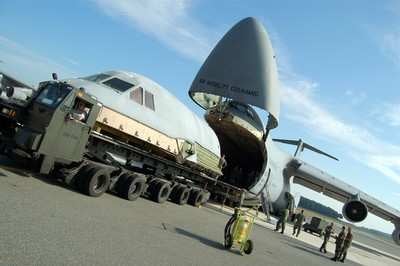
And when they air-launched a Minuteman I:
!!! UNKNOWN CONTENT TYPE !!!
 "MonkeePuzzle" (monkeypuzzle)
"MonkeePuzzle" (monkeypuzzle)
06/30/2017 at 15:01, STARS: 2
saw a C5 at an airshow a kid. it BLEW. MY. MIND!
 "MonkeePuzzle" (monkeypuzzle)
"MonkeePuzzle" (monkeypuzzle)
06/30/2017 at 15:02, STARS: 1
“nice hat” ~ this adult
 "MonkeePuzzle" (monkeypuzzle)
"MonkeePuzzle" (monkeypuzzle)
06/30/2017 at 15:07, STARS: 2

#MsPaintChopRecycle
 "ttyymmnn" (ttyymmnn)
"ttyymmnn" (ttyymmnn)
06/30/2017 at 15:39, STARS: 0
It’s a big bird.
 "$kaycog" (skaycog)
"$kaycog" (skaycog)
06/30/2017 at 15:46, STARS: 0
Neat pics!
 "$kaycog" (skaycog)
"$kaycog" (skaycog)
06/30/2017 at 15:48, STARS: 0
Too funny!

06/30/2017 at 16:43, STARS: 1
Many, many, many years ago I went to the Westmorland County airshow with my dad and his brother, and there was a C-5 doing a flyover. As it’s lumbering past, my uncle turns to us and says:
